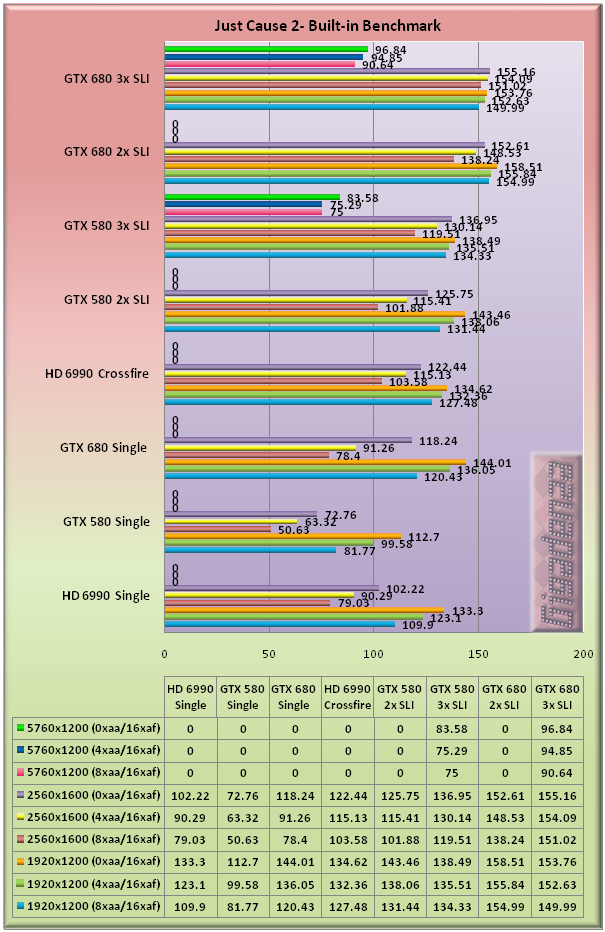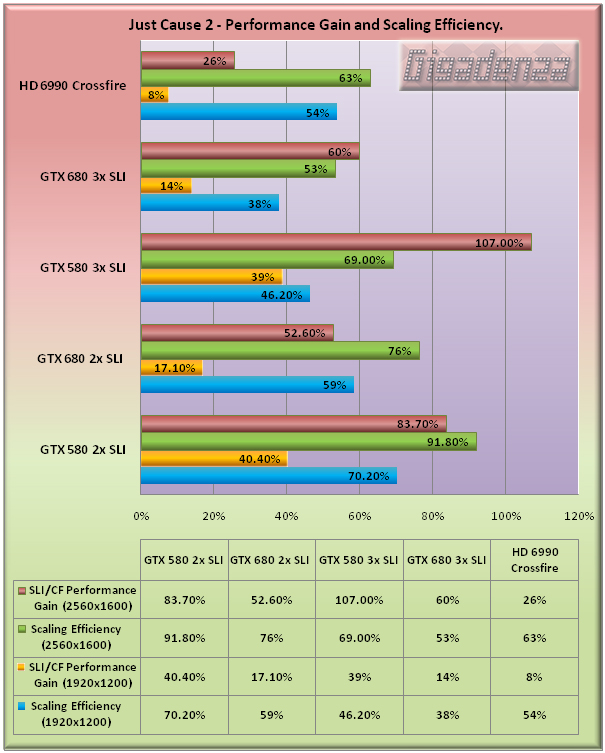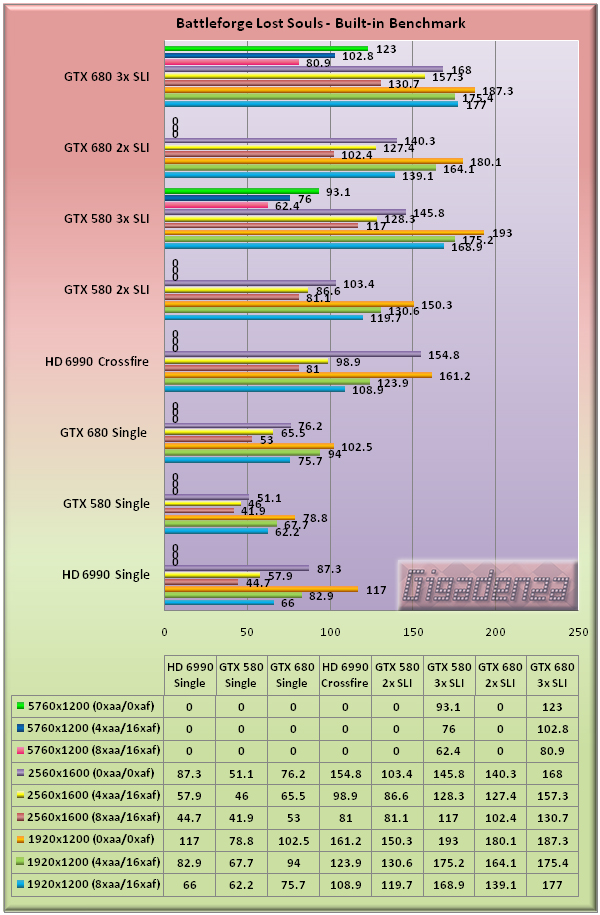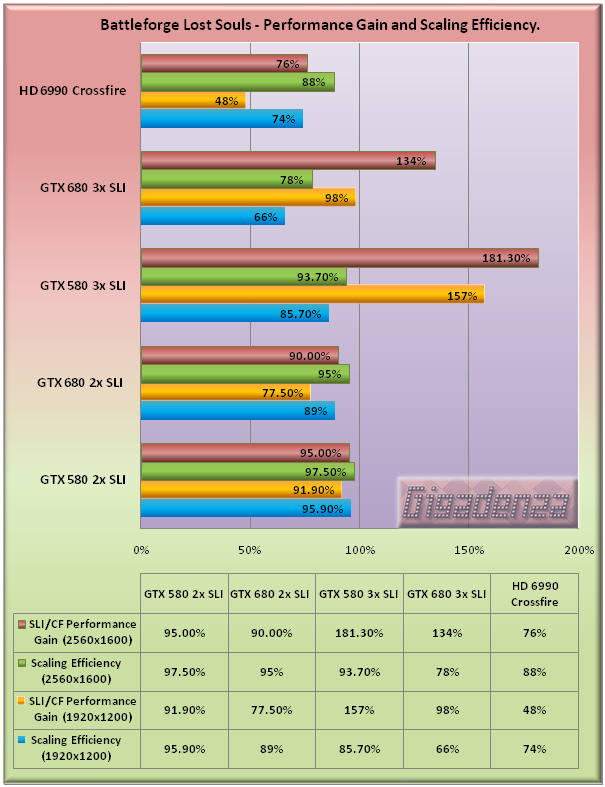The “Kepler” Rides Out – The Benchmarks.
Test 4 – Just Cause 2.

Just Cause 2’s built in benchmark moves us back into directx 10 territory and is one of the fastest to run since the game doesn’t need restarting in order to apply any of the settings. There are two options , bokeh filter and enhanced water detail, that are exclusive to Nvidia cards, both of these were disabled while all other settings were either enabled or left at their highest possible detail level.
Another victory for the 680 in singles competition, where it displays some of the most significant improvements so far. Faster overall than the 6990 and at 2560×1600, between 50 and 60% faster than its older sibling.
As we move into multi-card territory we are once again hindered by the software’s inability to provide the GPUs with enough work so as to avoid the CPU becoming the primary encumbrance. In most cases, the higher resolution of 2560×1600 is enough to shift the workload back onto the video cards. The 680s in 2 way SLI manage to overhaul three 580s while adding a third 680 will only benefit those with a triple-screen setup.

Our scaling figures confirm that, in this instance, the sweet spot for optimum performance and value is a two way SLI setup running at a resolution of around 2560×1600 (2560×1440 for 16:9 screens).
The 6990’s disappointing results can be partially attributed to a pronounced frame rate decrease towards the end of each benchmark, which lasted between 5-10 seconds. The anomaly occurred at exactly the same point on every occasion and is almost certainly driver related.
Test 5 – Battleforge Lost Souls.

In Battleforge, one of the very first titles to make extensive use of DirectX 11’s feature set, it would appear that we finally have a benchmark worthy of these card’s silicon! Excluding the settings for AA and AF, all other options were either enabled and/or set to the highest possible detail level.
The 680 once more shows marked improvements over the 580 (as high as 50% at 2560×1600) and goes toe to toe with AMD’s monster, winning four out of six tests and demonstrating a superior ability to process eye-candy.
The pattern is repeated when we start adding cards, though the 6990s in Crossfire lose more ground to both Nvidia candidates, falling behind the 680s in five out of the six tests. On this occasion, two 680s can’t quite match three 580s while for once, a third Kepler actually yields a notable speed boost, especially at the higher resolution, though quite how many would be discerning enough to notice the difference between 100 and 130 frames per second is a matter for further debate!

Granted, the frame rates were pointlessly high but isn’t it satisfying to see consistently efficient scaling? The only occasion that any of these setups dips below 70% of its maximum “payload” is when we have three 680s running at 1920×1200, hardly surprising considering how difficult it has become to tax these cards at the said resolution.




